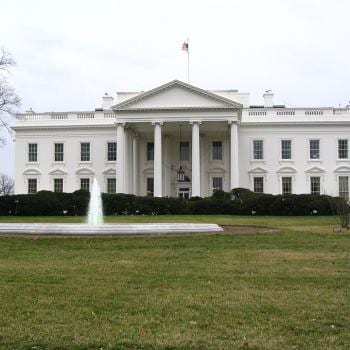I’m going to repeat some things that I think need repeating. I’ve seen far too much fuzzy logic on the relationship between the taxpayer and abortion.
The basic premise is that we want to erect as high a wall as possible between each and every abortion and taxpayer involvement. A worthy aim, even if the taxpayer is complicit in other morally dubious acts, especially related to military spending – but I’ll let that pass for now. But if we think there is no subsidization of abortion today, we are kidding ourselves. The famous Guttmacher study showed that 13 percent of abortions are billed to medicaid, about the same as to private insurers – clearly, the Hyde rule can be bypassed quite easily at the state level. This is a direct relationship. More indirectly, the government provides funds to Planned Parenthood, on the understanding that this money does not fund abortion. But again, if you use the fungibility argument that many are using in the current debate, then this practice too is unacceptable. Medicare doesn’t fund abortions of course, but it makes payments to plenty of hospitals that do.
And I have not even mentioned the elephant in the room. Every year, the government spends $250 billion to make employer-sponsored health insurance tax-free. This is an indirect subsidy, but still a subsidy, and a huge one at that. And since private insurance coverage of abortion is widespread, this amounts to the indirect subsidization of abortion on a huge scale. Why do we not hear much about this? Largely, because people don’t understand the economic nature of a subsidy, which is to change the relative price of some good, making it cheaper than it otherwise would be.
This argument holds in other cases too. I’ve heard some people who direct subsidies in the exchange should be replaced by vouchers that can only be used to purchase health insurance. Sorry, but from an economic standpoint, there is no difference here. In each case, you are purchasing an insurance plan with some financial support from the government – whether the government sends the money directly to the insurer of your choice, or directly to you so that you can pay the insurer of your choice makes no difference whatsoever. It does not stop you from purchasing a plan that includes abortion, and from the taxpayer helping you pay for it.
The same argument applies to a strategy much-loved by Republicans – the use of tax credits to allow people to buy insurance in the individual market. This doesn’t work either, as the tax credit is again acting as an indirect subsidy of a plan that includes abortion.
Let me say a word here about the public option. The confusion is even greater on this point. You have silly statements from the National Right to Life Committee (NRLC) saying that a public option with abortion amounts to “federal government funding of abortion”. Once again, the public option is funded entirely by private premiums. The only taxpayer involvement comes from subsidies, and here, the logic is exactly the same as with competing private options. If covering abortion is a problem in the public option, then covering abortion is an equal problem in any private option. There is no moral difference. Why does the NRLC not complain about “big business funding of abortion”? I think a problem here stems from the “Joe Lieberman fallacy”, the notion that the public option is somehow a government entitlement like medicare or medicaid. It isn’t. If anything, the subsidies can be considered an entitlement, and these can go to either the public or private options.
Clearly, all roads lead back to the coverage of abortion in private health insurance plans. This is the key issue. Any involvement whatsoever by the government in health care will lead to abortion being subsidized as long as abortion is covered. For sure, some of this subsidization is pretty indirect, but this debate now revolves around ever finer distinctions of how the barrier between taxpayer funds and abortion should be defined. This is not a very fruitful debate. For sure, I support the Stupak amendment and hope it, or something close to it, gets passed. But let’s not kid ourselves that this is stopping government involvement in abortion. Given the degree of moral proximity that is already evident, I cannot see any moral argument against a health care bill without Stupak, unless on grounds of prudence. Nobody has persuaded me that the argument of Cardinal Dulles does not hold. And if it is morally unacceptable, then all of us who pay premiums to private insurers are just as tainted morally.
Ultimately, there is only one real solution – a push to stop abortion coverage in private plans. If that goes, all problems on the taxpayer side go away. And if that stays, all the problems on the taxpayer side stay too.












